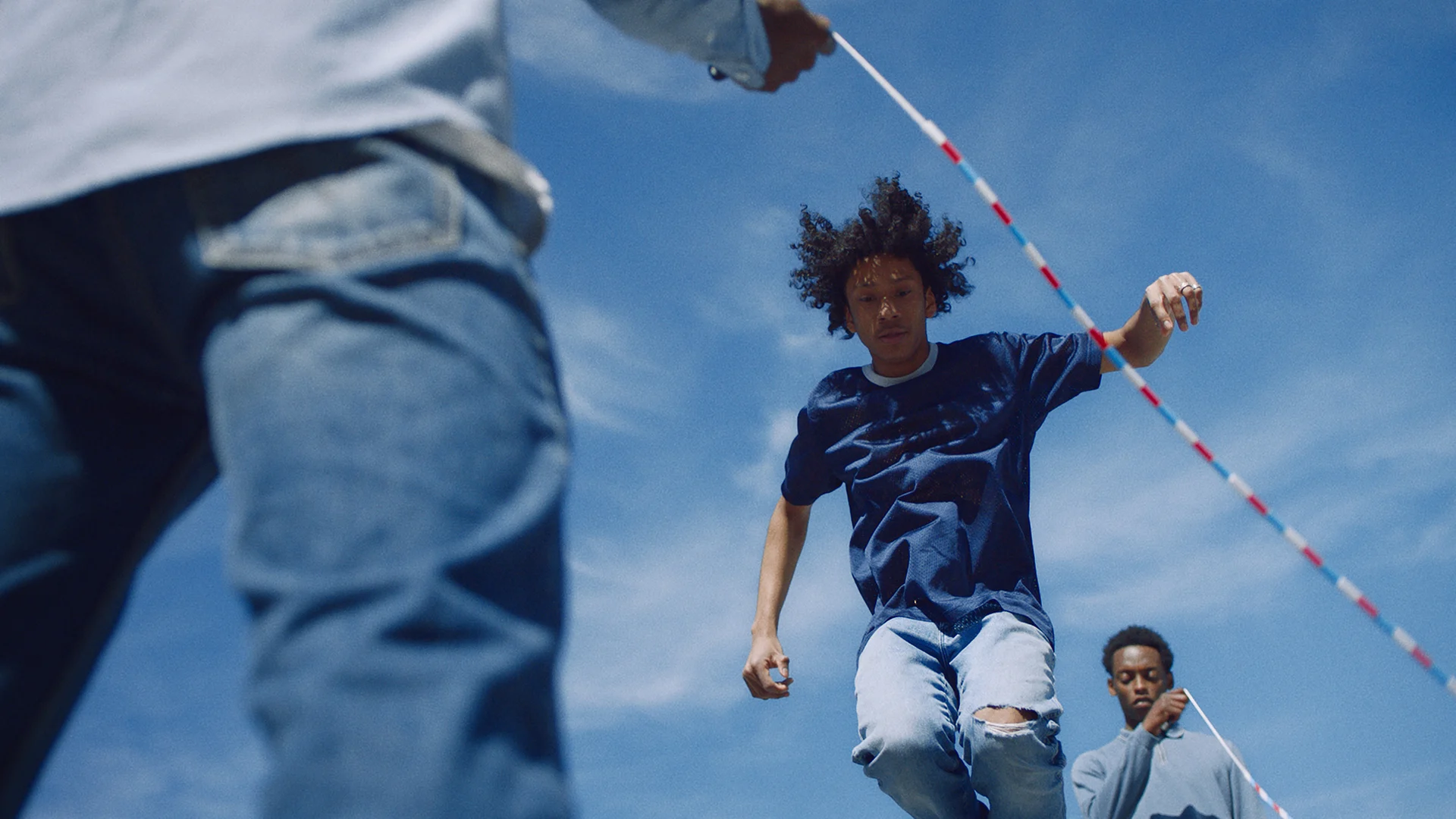
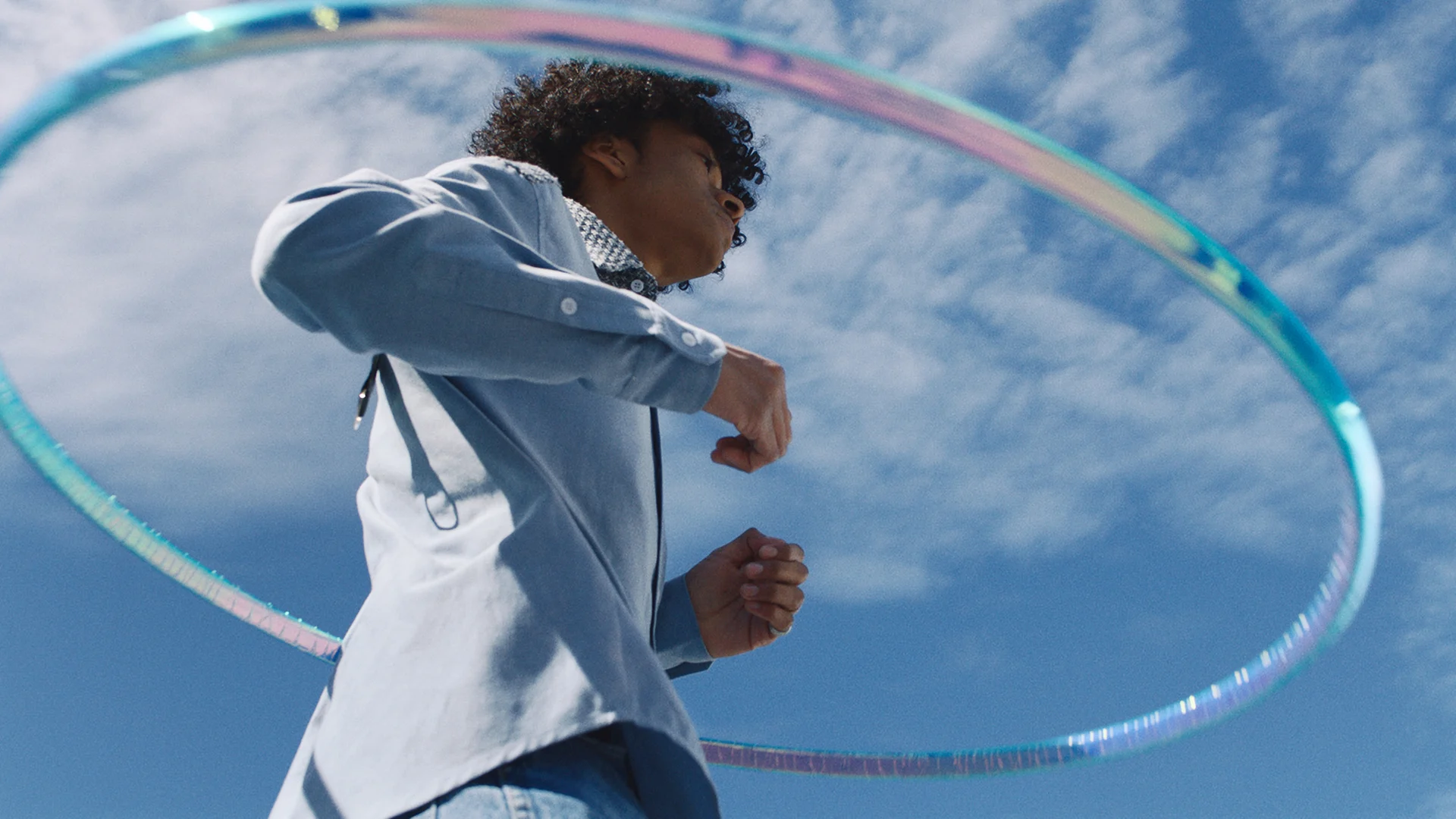

Behind the scenes of our collaboration with the photographer
Since shooting Beyoncé for the Vogue cover in September 2018, Tyler Mitchell has been catapulted into a new level of fame. But how does the young image-maker work, and what is he trying to say?
Ahead of his new solo show in Amsterdam, Antwaun Sargent spent time with Tyler – on set in Atlanta and back in New York – to better understand what drives him.
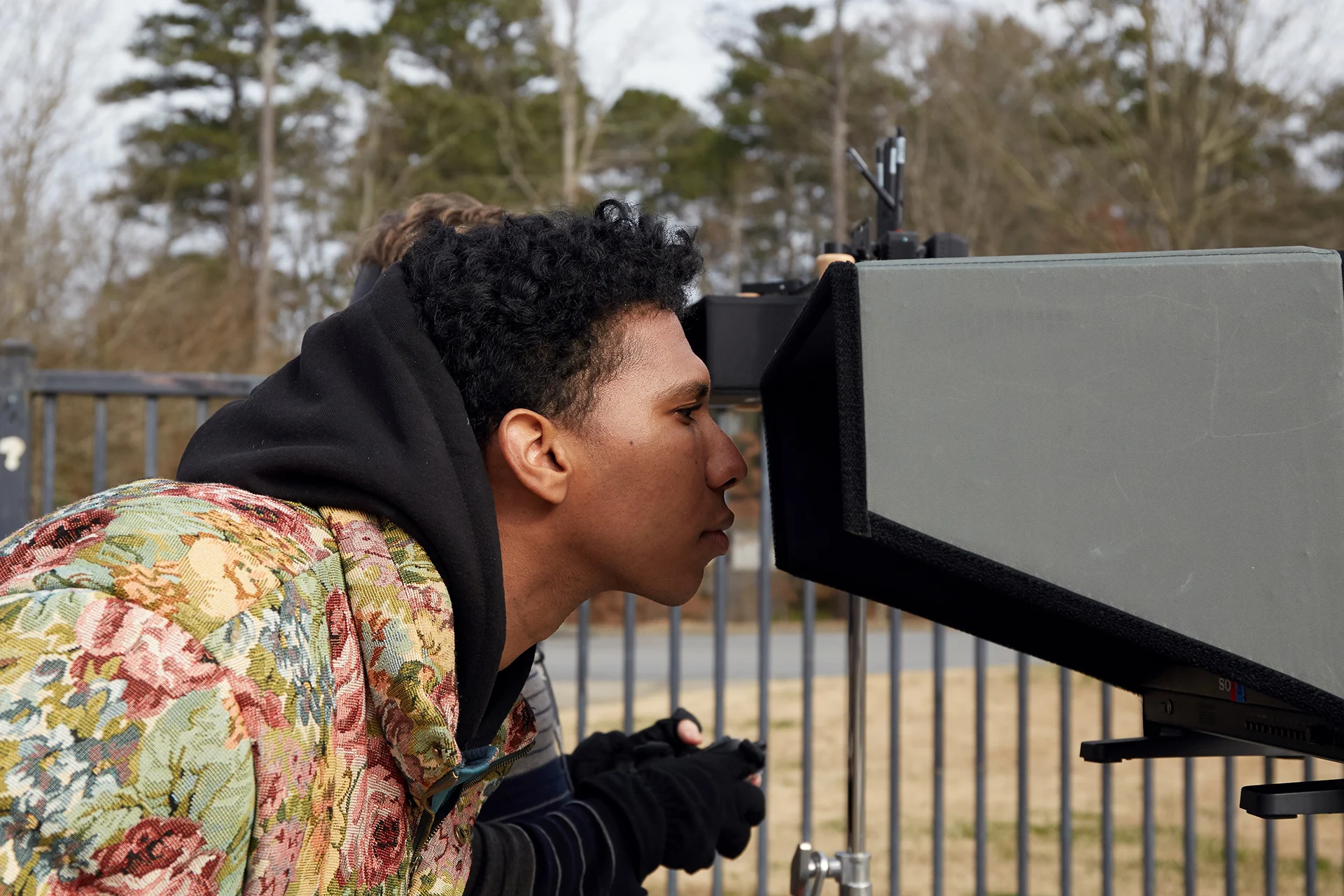
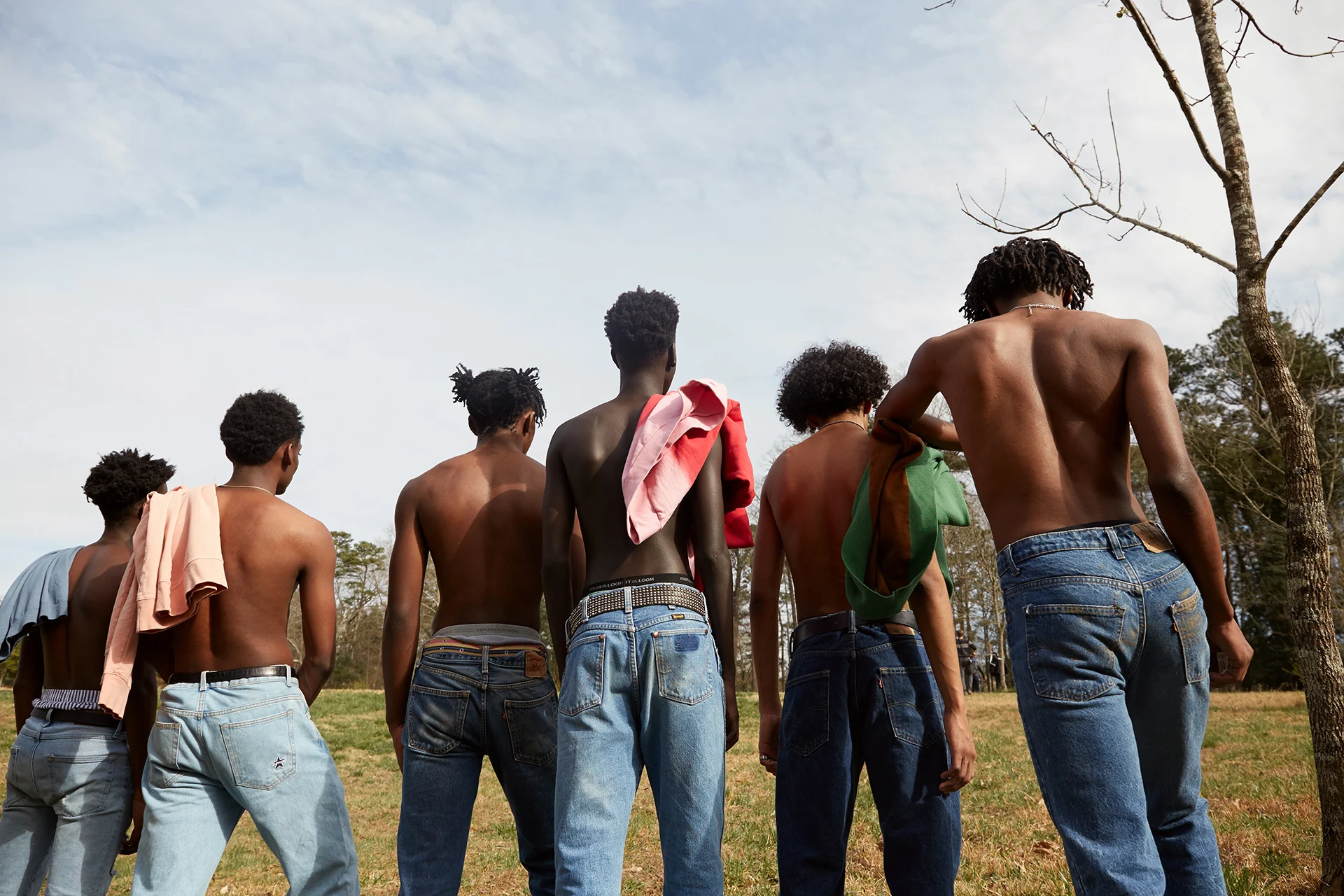
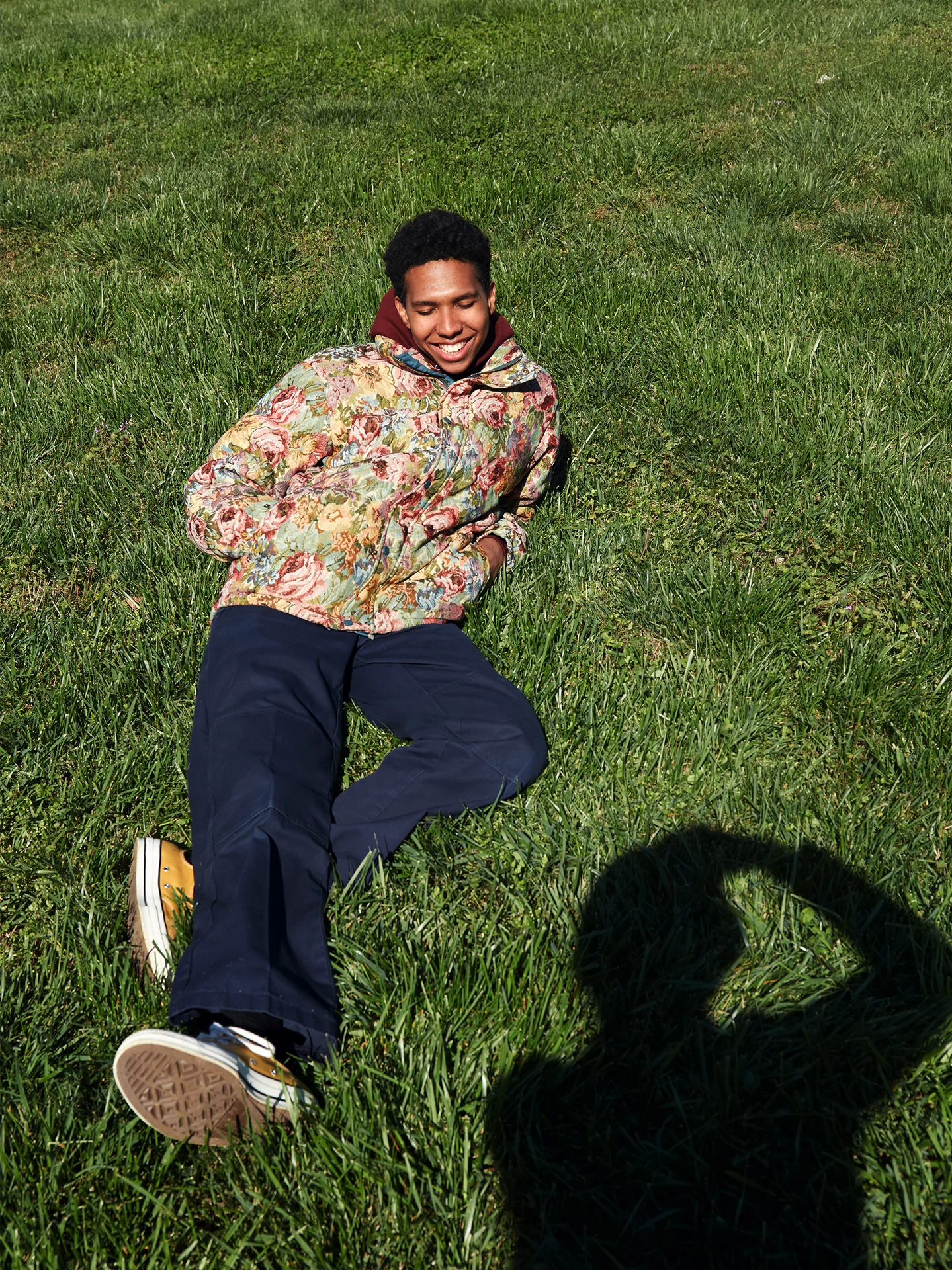
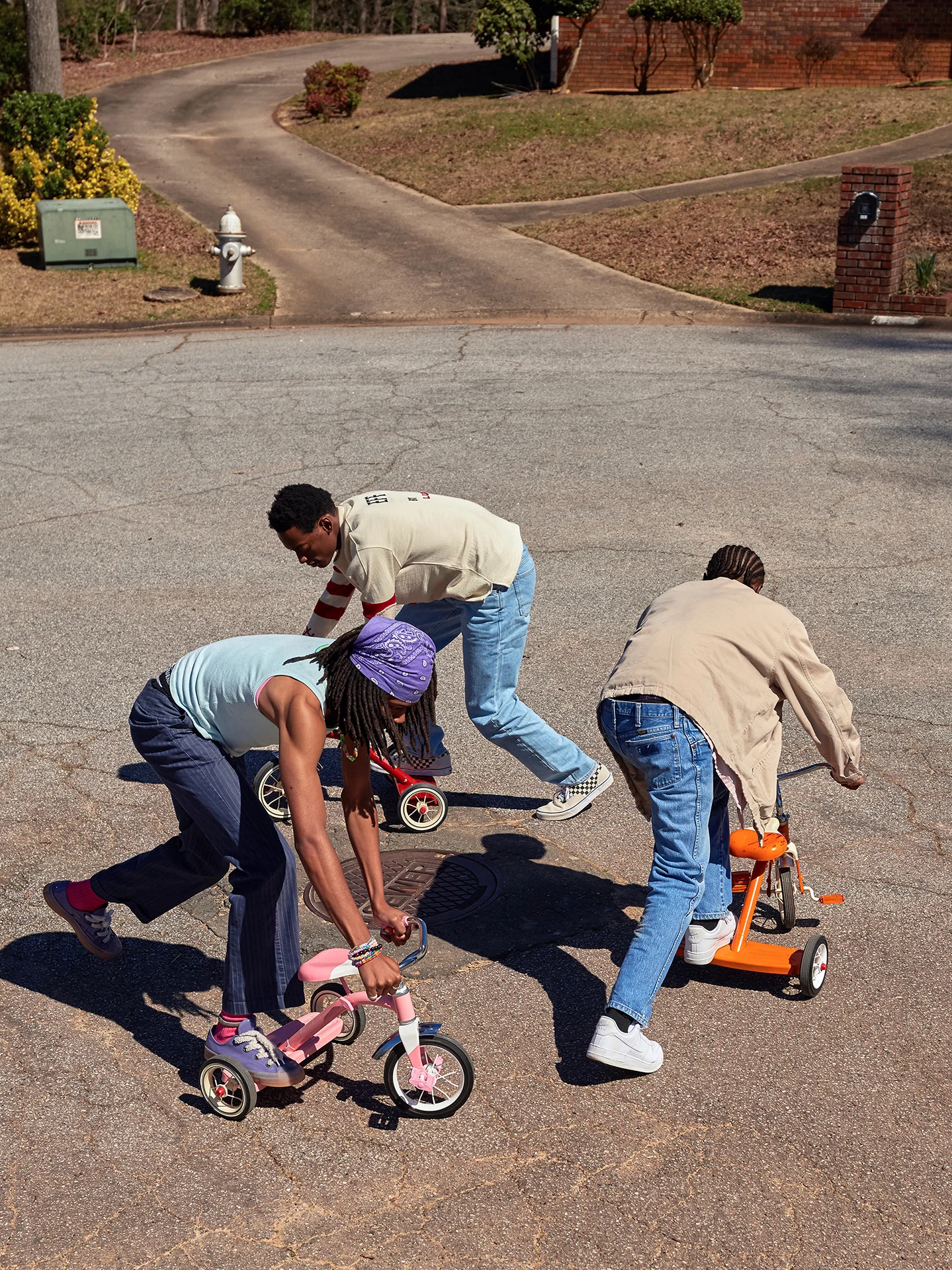
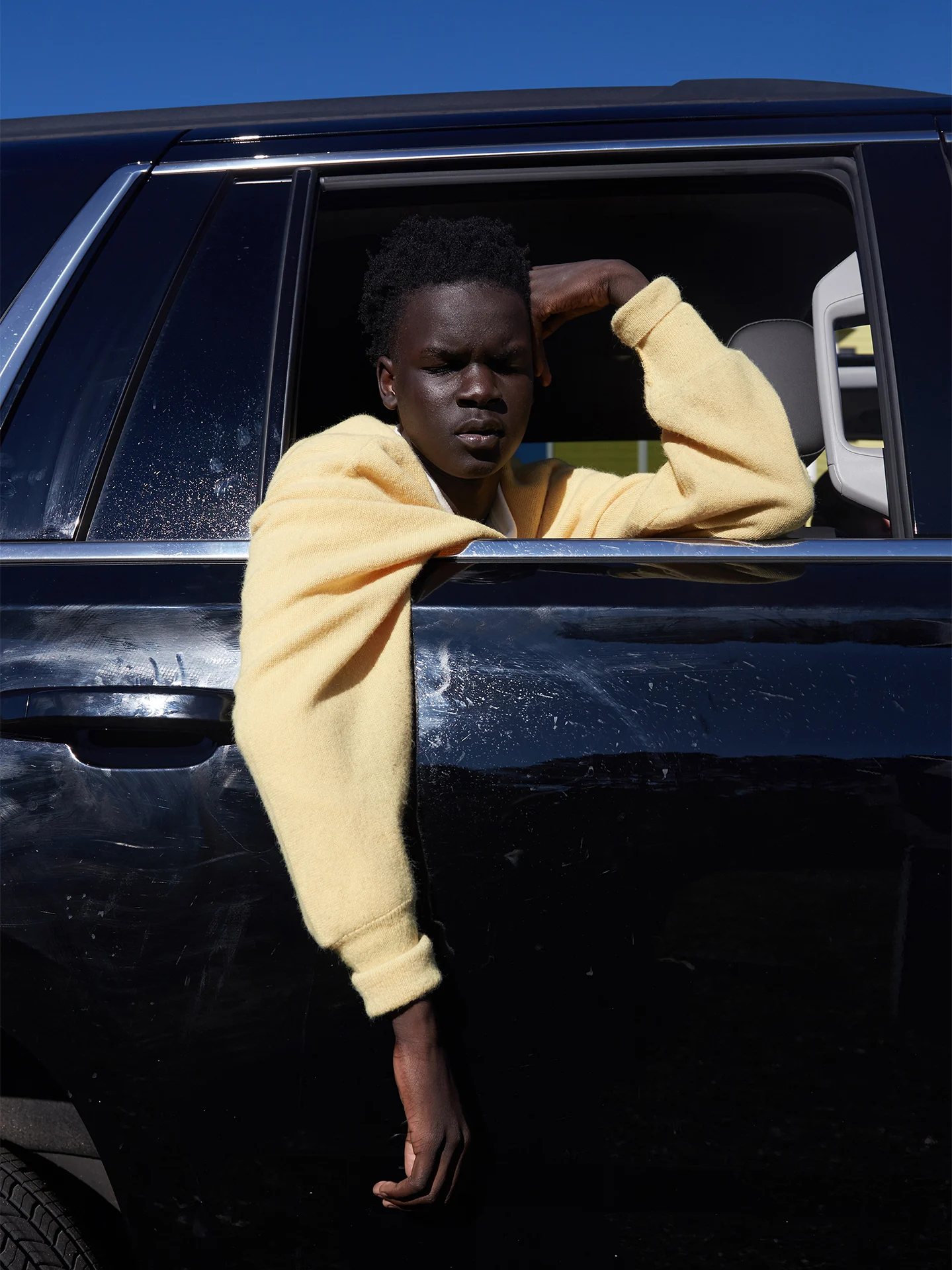
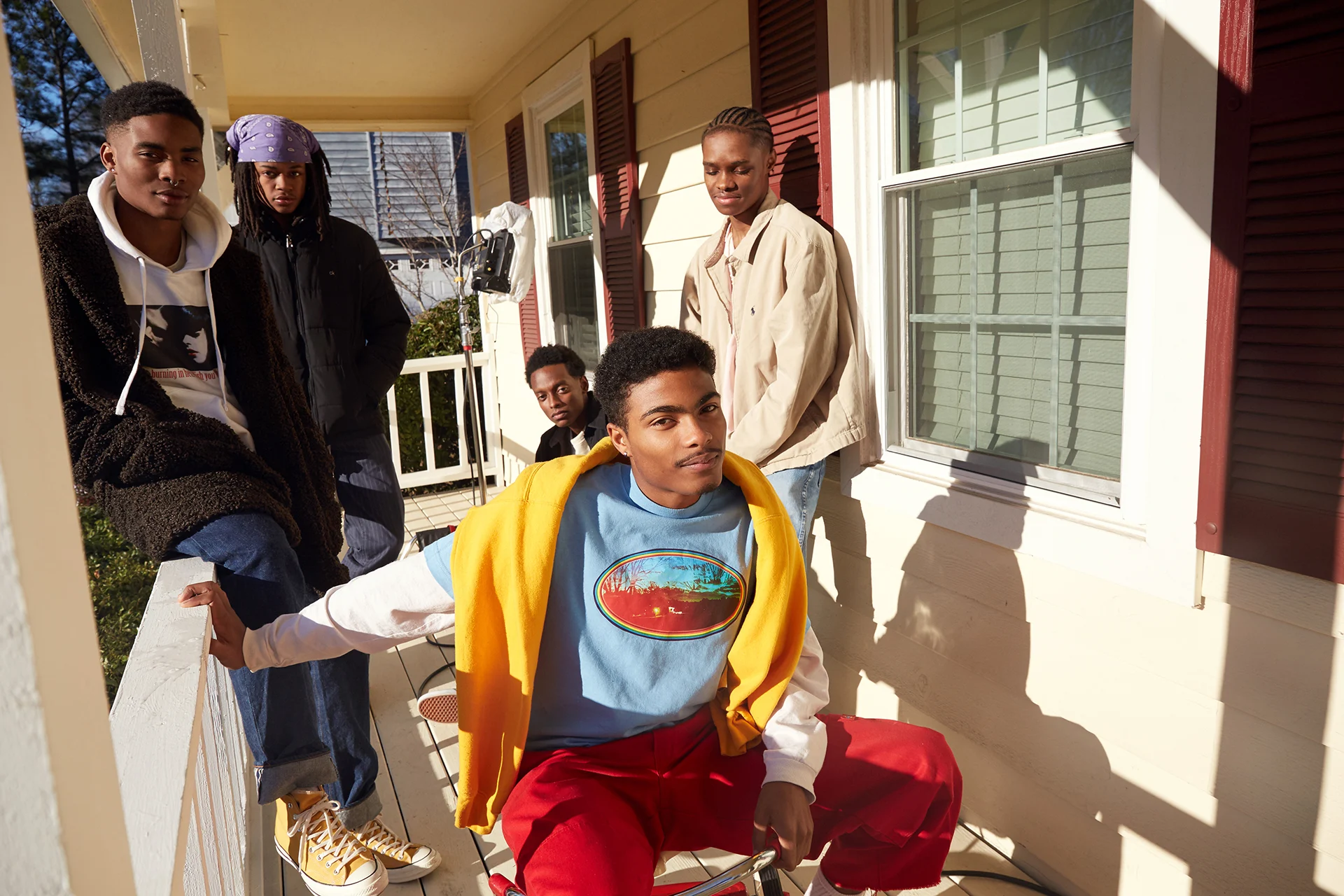
On an early March morning, 24-year-old fashion photographer and filmmaker Tyler Mitchell is sitting in a director’s chair staring intently at a large black monitor. It’s 29°F in Austell, Georgia, a small suburb west of Atlanta, but framed in his shot are three lithe black boys wearing long blue shorts floating in a heated pool in the backyard of a small, two storey home.
To keep warm, Tyler, an avid skater, is wearing the subculture’s uniform: blue Dickies flex pants and yellow Converse sneakers, styled with a multi-colored garden puffy jacket covered in lilies from the musician and designer Tyler, the Creator’s Golf label. As the heat rises off the pool, becoming stream in the fresh freezing air, Tyler shouts instructions.
Wait until I call action please...Come more toward the camera...Wanna just roll for a little? Ohhh, that looks great!
The film is also speaking to utopic space. But it’s seen through the language of suburbia, Georgia, and the south, where freedom also exists amongst black men.
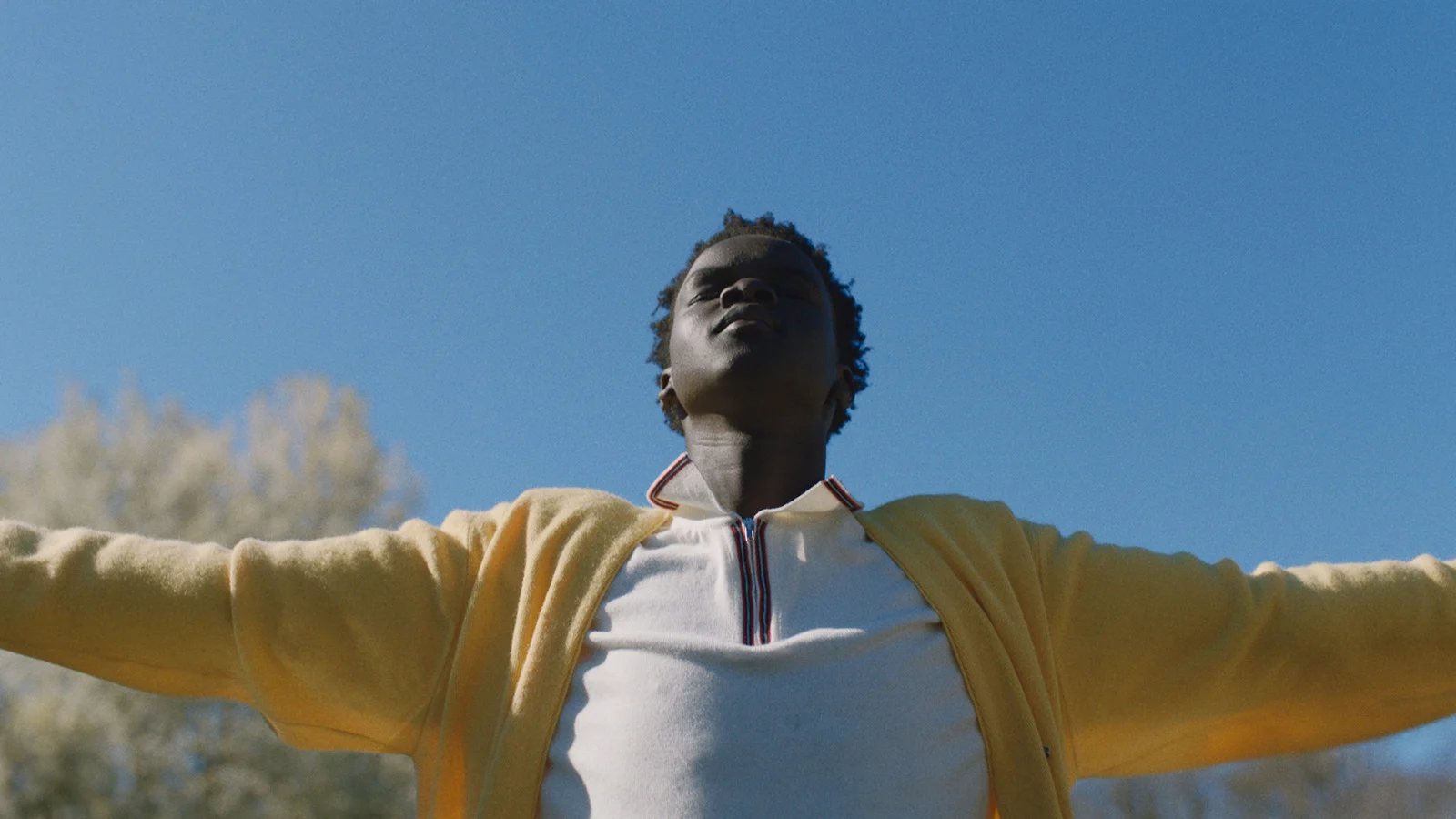
I really wanted to make something that felt black, that felt me.
Cut. Tyler and a small crew are shooting the first scene of Idyllic Space, the artist’s latest video that will premiere in his first solo museum exhibition, I Can Make You Feel Good at the Fotografiemuseum (Foam) in Amsterdam.
The title is taken from Shalamar’s 1982 post-disco record. “It’s declaration for some kind of positive outlook on image-making which I kind of take on in my work.”
The exhibition will feature his personal, more art-driven photography that explores black boyhood on the brink of blossoming into manhood; snapshots from his commercial editorials for magazines including Document Journal and American Vogue – an argument for recasting fashion into something more intimate and socially driven – and films which build on what he calls a black “universe” that explores a sense of play, love and freedom. “I really wanted to make something that felt black, that felt me, but that wasn’t exoticizing any of that experience,” he explains. “Also, I wanted to highlight my interest in making beautiful images.”
The beauty on display in 2016’s Christopher Street – a portrait of a male couple standing on a busy New York street sharing a tender moment – is quotidian in nature and shot in the soft natural light that has become a signature of Tyler’s limpid young eye. The photograph is representative of a growing collection of still and moving images where we see Tyler’s interest in a sensitive world where expressions of dignity and vulnerability star just as much as surface appearances.
Fashion is used to either speak in relation to the subject or to elevate them, and the styling must be perfect because for Tyler, clothes are transformative only when they’re a just reflection of the person embodying them. As an example he points to Untitled (Hat), a studio portrait of a dark skinned black boy wearing a large purple fascinator which he says, “gives an aura to him that speaks exactly to what I want to say about him.”
In a Tyler Mitchell photograph, his stylish black subjects are seen as they are gazed upon from inside the circle of community where their blackness is honored, not as rarified achievements of beauty but mundane, familiar occurrences. Beauty just is.
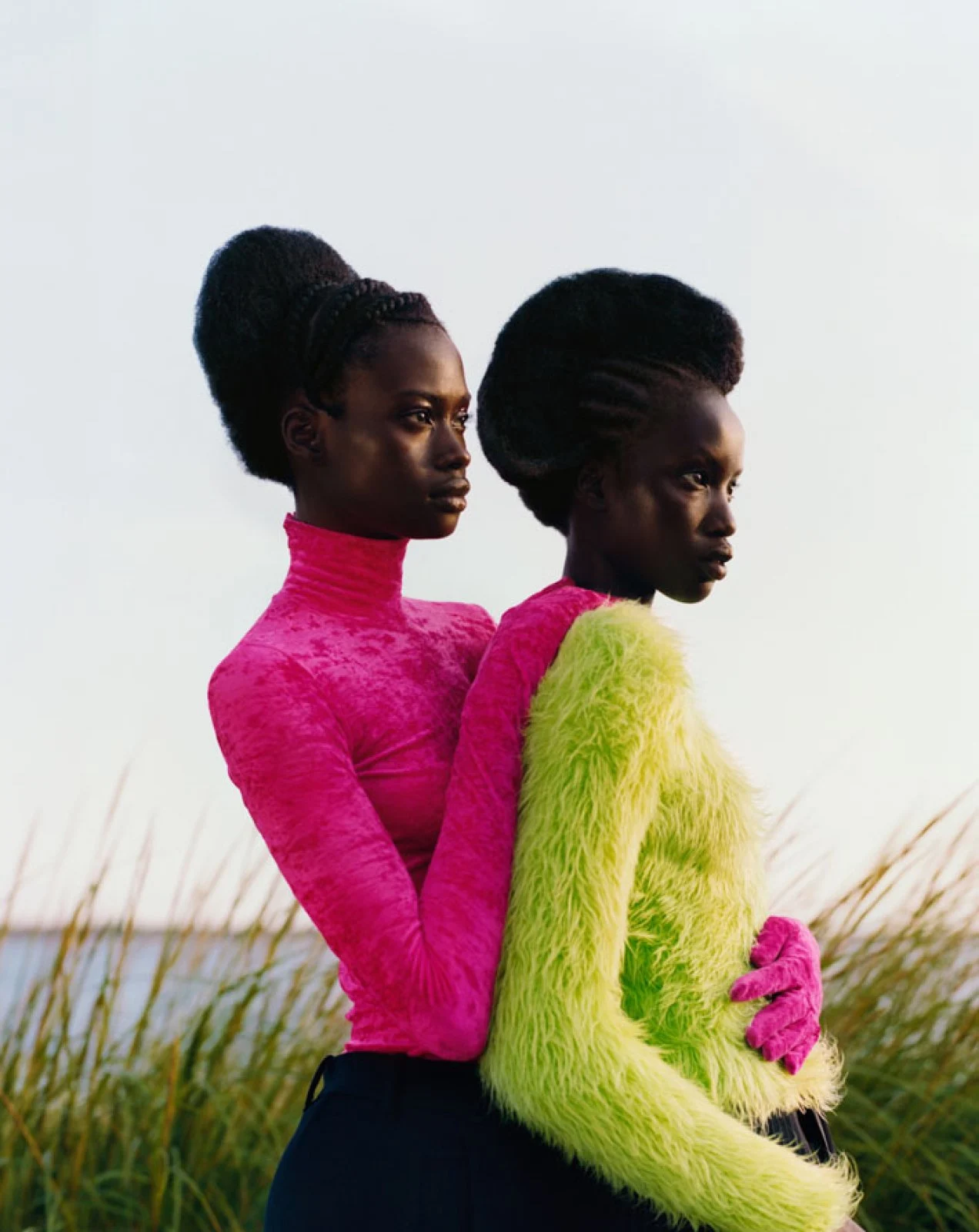
Photographs such as Untitled (Kiki and Stephan) and Rose Lick – which will both be in the Foam exhibition – show black subjects enjoying the simple yet wondrous pleasures of living. Some are pregnant and frolicking in grassy pastures, some are shown peacefully asleep and in love which is to say, fully human. It’s the image maker’s way of trying to visualize and capture what he calls, “a black utopia” with an “honest gaze.”
In between takes in the makeshift production office, Tyler explains that Idyllic Space will continue to explore precious black space in the form of “boyish innocence.”

“I’m trying to create something that can be very self-contained in its optimism. Can this film be a reprieve for somebody? That seems cool to me, but also that it can insist on something about black life: we have leisure time. We have upper middle class community.”
The crew are setting up a scene where two boys will lay on the carpeted floor, tossing gummy bears into the air and catching them in their mouths. They'll then ride trikes around a nearby cul-de-sac with a few others.
It is autobiographical. It’s about, you know, the things I’d like to reflect and see in an image.
The passage of time and how it shapes identity are “intersections,” Tyler says, “that create a really powerful place to film somebody, like, lying on their backs, vulnerable, tossing gummy bears to themselves.”
He continues, “The film is also speaking to utopic space. But it’s seen through the language of suburbia, Georgia, and the south, where freedom also exists amongst black men. It is autobiographical. It's about, you know, the things I’d like to reflect and see in an image.”
Tyler grew up an only child a few miles from where he’s making the film, in Marietta, Georgia. In high school, he discovered image-making like most teens of his generation, by scrolling through hundreds of pictures every day on sites like Tumblr.
There he came across the work of photographers like Larry Clark, Alex Webb, Ryan McGinley and Petra Collins, who all document and extend the fantasy of uninhabited youth. But Tyler says he didn’t see himself in their images, there was no, “viewing of the black body in a sensitive way.” It led him to start thinking about what those images could be. He was a member of Jack and Jill, the private club for children from wealthy black families and an avid skater who spent his after-school hours at Brook Run Skate Park (where he shoots a skating scene for Idyllic Space).
In the ninth grade Tyler bought his first camera, a digital SLR Canon, but it was at New York University when he started formally taking the pictures and making the videos he wanted to see. Embedded with elements of street, documentary and fashion photography, they caught the attention of his professors like the theorist and artist Deborah Willis Thomas and young black musicians like Solange Knowles.
He collaborated with Solange on Metatronia a performance work presented at the Hammer Museum in Los Angeles in 2018.
On a six-week trip to Cuba during his sophomore year, Tyler shot vivid, color-filled images of local Havana life as it was being lived by a community of boys who skated and hung out, much like he and his friends in Atlanta and New York. He self-published them in the photobook El Paquete and by the time he had graduated from NYU’s Tisch School of the Arts in 2017, he was shooting for fashion magazines like i-D, The Fader and Dazed, making music videos for indie rappers Kevin Abstract and Abra, and showing his work at Red Hook Labs, an emerging but important photography gallery for young picture makers in Brooklyn.
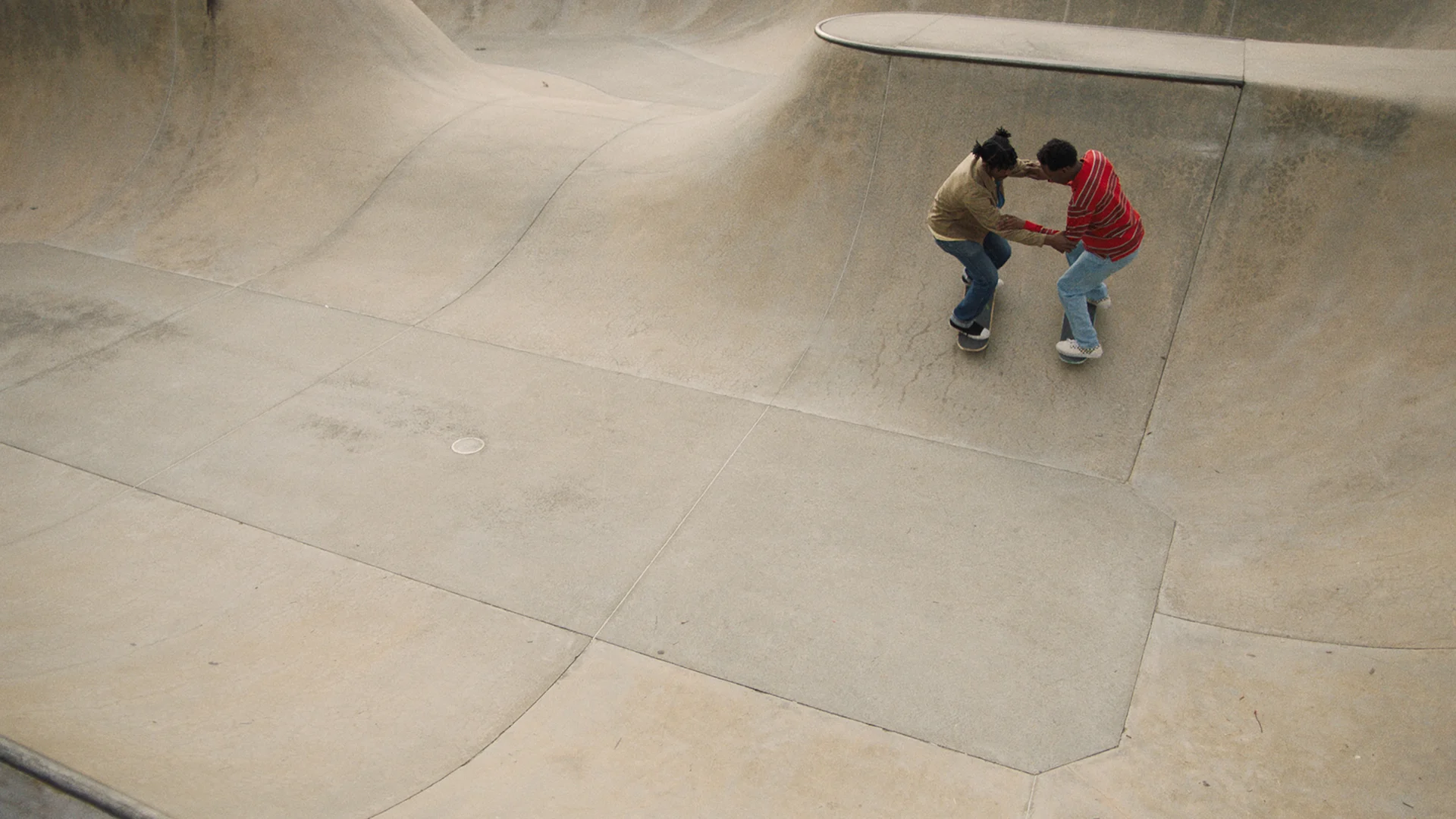
In 2018, Tyler’s images caught the attention of American Vogue’s long-time editor Anna Wintour, and she gave him a history-making assignment: shoot Beyoncé for the September cover.
The fall issue’s front cover is perhaps the biggest stage in all of fashion photography. From it, the venerable publication’s editors have dictated our collective taste by mixing celebrity and fashion to construct powerful images of beauty, often narrowly defined but filled with fantasy.
When Tyler’s two covers of arguably the most famous woman in the world appeared on newsstands in August of 2018, it made Tyler – then 23, and the first black photographer ever to shoot a Vogue cover – famous.
What is perhaps most striking about the two covers, and the video and fashion spread that accompanies them, is that they are – aesthetically and conceptually – quintessentially Tyler.
It’s always been about the person in the picture, my relationship to the person and always has a social undertone.
Beyoncé is seen as a member of his universe, in nature, under the sun, styled and positioned in ways that evoke black pride. This is a cultural icon on the global stage, but what we see – at least on one cover – is a black woman, hair braided back into crown rolls, wearing a ruffled McQueen dress that prominently and unmistakably features the Pan-African tricolor of red, green and black.
“There’s a certain intimacy you’ve never really seen her viewed under,” Tyler says. “It’s characterized by a certain interest in purity and closeness I have with my subjects.” The amity seen in the Beyoncé portraits is representative of a new kind of fashion image that emerging black photographers, like Tyler, are creating.
He cites as inspirations the street style photographer Jamel Shabazz, the artist Carrie Mae Weems and the socially engaged filmmaker and famed photojournalist Gordon Parks, who shot fashion images – but never a cover – for American Vogue during the post-war period. “My work has never been about pushing this agenda of great fashion images á la Irving Penn, Richard Avedon, Steven Meisel,” he says. “It’s always been about the person in the picture, my relationship to the person and always has a social undertone.”
A few weeks after the shoot wraps in Atlanta, Tyler emails me a draft of the film and we agree to meet for a late lunch at an Italian restaurant in the East Village. The nearly 13-minute video, is imbued with the sense of purity that characterizes his portraits of Beyoncé.
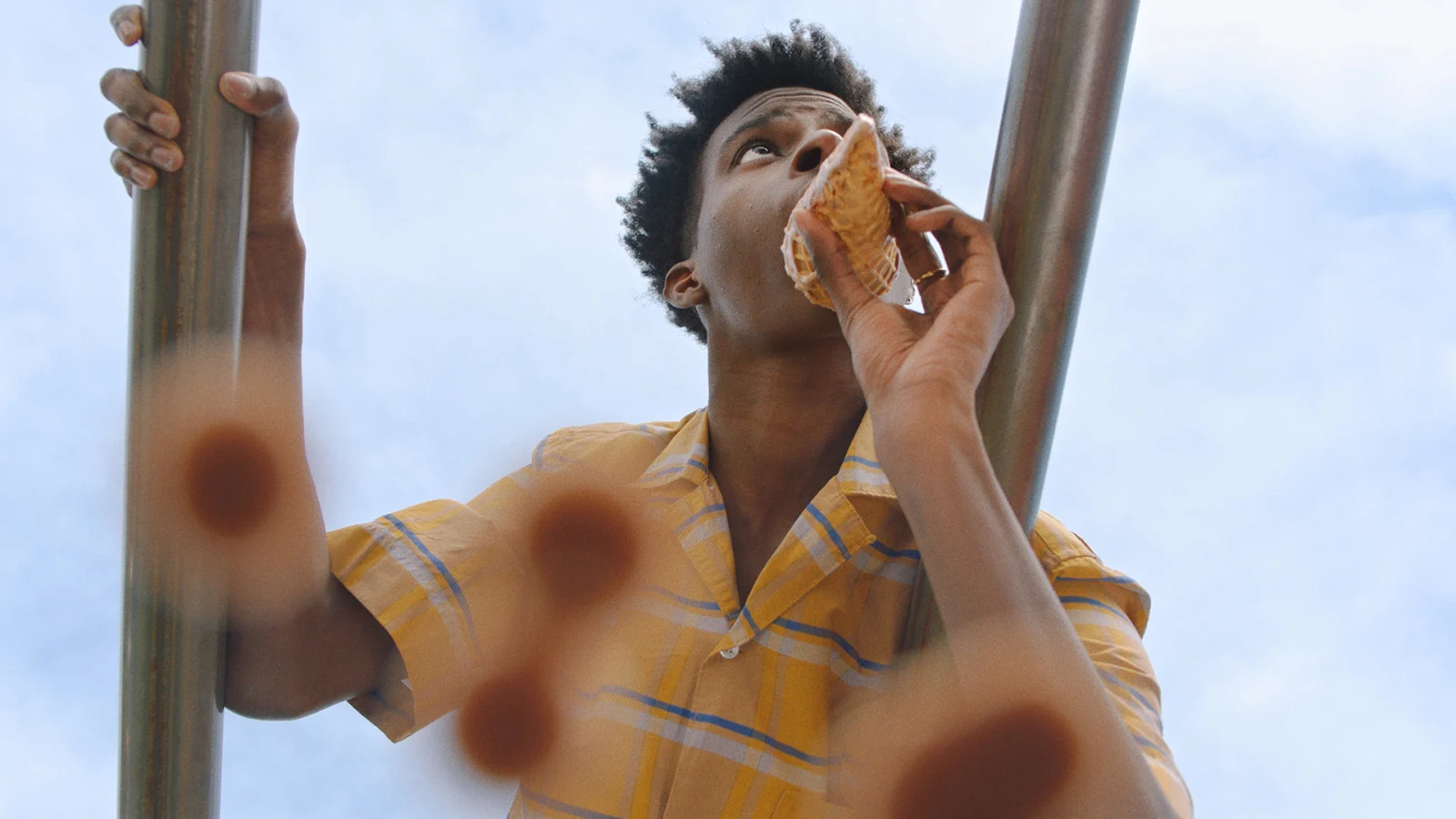
The camera aimed at the sky, the work is mostly shot from below because it will be projected on the ceiling of one of Foam’s galleries. It’s a vantage that gives the figures a celestial quality as they skate, swim, hula hoop, eat ice cream and gummy bears to an original, minimalist track scored by the musician Teo Halm. The simplicity is packed with symbolism and repetition that evokes suburbia and black innocence and escapism. “I’m now playing with a vertical relationship rather than a horizontal one,” he tells me, which was inspired in part by his frequent director of photography Owen Smith-Clark’s subway short, Census.
“Looking up to the skies or heavens has a whole history of spirituality that I’m somewhat interested in,” he says. “But I also like this idea that images can wash over you, they’re looking down on you too. It’s an easier viewing experience in a way. In the room you’re going to lay down on these beanbags, and you might even fall asleep.”
He pauses and grins. “I kinda want that. I want you to relax and be like, ‘Wow these really relaxing images of young black kids, I don’t know what’s going on but I kinda do. The perspective is skewed; it’s really beautiful.’”
Looking up to the skies or heavens has a whole history of spirituality that I’m somewhat interested in.
Idyllic Space will be shown alongside an earlier work, Chasing Pink, Found Red. This piece deals more directly with things that occur to black bodies outside of Tyler’s black utopia.
It’s a three channel video installation, that in some ways, Tyler explains, is a reaction to and embrace of the Black Lives Matter Movement. The images of boys his age (and younger) like Trayvon Martin, Michael Brown and Tamir Rice, killed by the police or white vigilantes, have had a profound effect on what he wants his art to do.
In the 29-minute Chasing Pink, Found Red, we see saccharine footage of a black boy in a state of transition, a picturesque picnic scene where young black boys and girls lie asleep on a handsome afternoon and a short shot of a female subject who suddenly awakens in a state of confession.
Crashing over these images are the anonymous voices of Tyler’s peers that he crowdsourced online, recounting confrontations with racism and suspicion that first troubled, then made them double down on who they are.
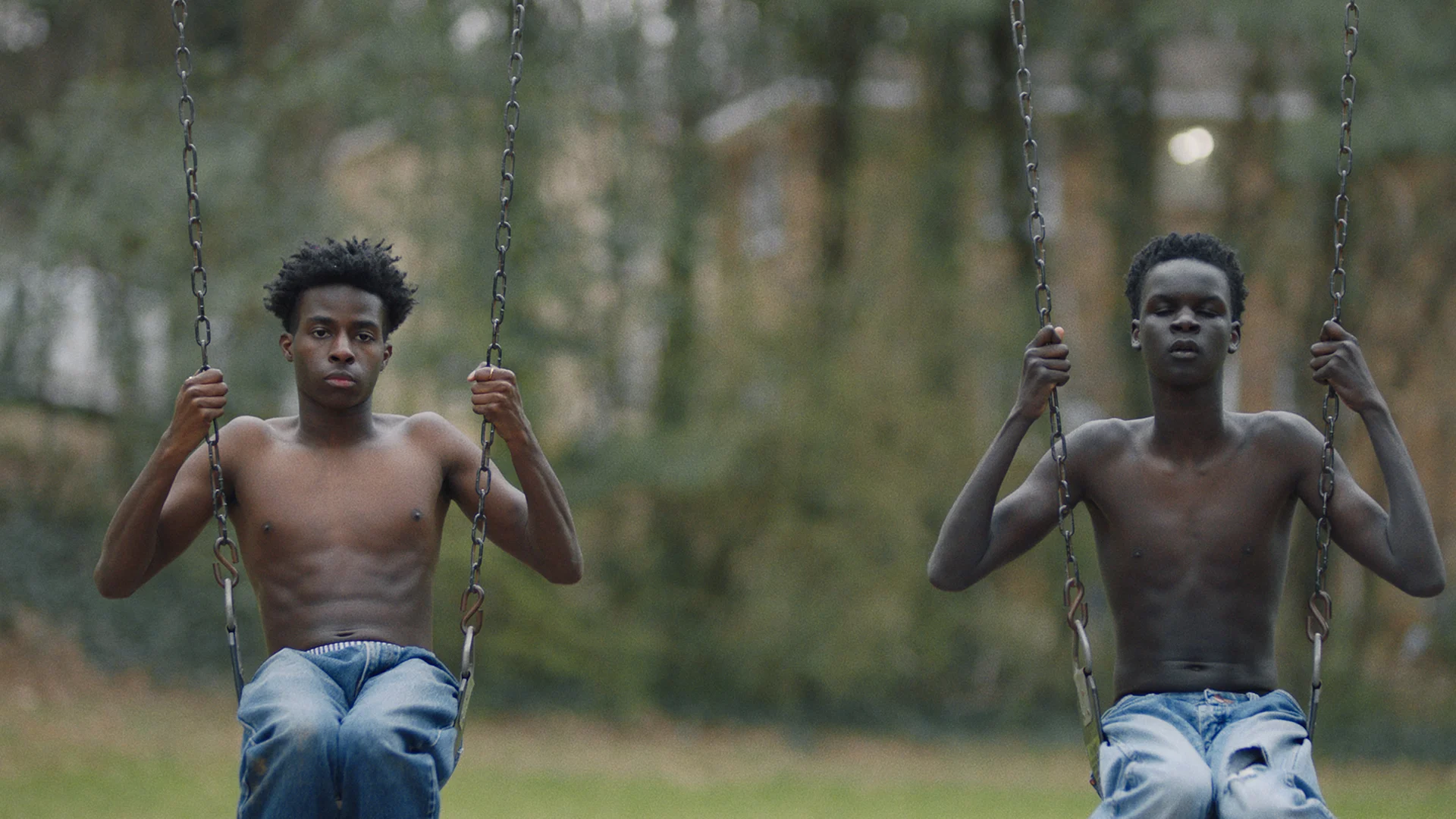
It’s a soundscape of the typical injustice visited upon black kids that would seem outré as narration for the gorgeousness rolling on the screens if Tyler’s point wasn’t to show how in the lives of black youth, both prejudice and beauty become “banal.”
In one sequence, a young black woman tells the story of her mother styling her hair into afro puffs one morning before school, and how she walked into class and her friend, a white student, asked, “What’s going on with your hair?”
“I don’t remember what I said back but I’ll never forget the feeling of just shame, embarrassment that didn’t come with me when I walked into that room,” she says seemingly still hurt. “Like, before I stepped into that door I was proud and beautiful and happy…”
We are the biggest displaced population but never got the title.
The story is followed by the most, chilling piece of audio in the work where another young black woman’s righteous anger builds into an exasperated crescendo as she recounts how “transgenerational trauma is our normal.” She says:
“We are the biggest displaced population but never got the title. Never got the reparations. But we have to deal with all the consequences of being a displaced population. So like I really sat here and got frustrated just even thinking. So right now, right now! You are currently hearing me be confronted with my blackness here and right now in America. Knowing that any minute some wrongdoing can come to me and that there’s no guarantee that justice will be served.”
Struck by the blunt rawness in her voice against the alluring images, I ask Tyler why this contrast was necessary. He takes a long sip from a glass of water.
I can see him trying to figure out what he wanted the film’s representations – which he purposefully constructs without the reality of racism – to do in relation to the black voices that invade the frames, at once contradicting and making his art necessary. His lightsome images are beacons of hope; reminders that there are safe spaces in dystopia. We just have to create them.
“To convey black beauty is an act of justice,” he says.
